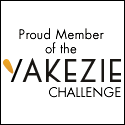February 17, 2020
 If you have tried your hand at stock trading, you may know how a demat account works. When you buy equity shares, these get credited into your demat account. Similarly, when you sell those shares, they get debited from your demat account. The account functions like a savings bank account, except that instead of parking cash it stores your financial security certificates.You can open an account with a depository participant (DP) like a bank or broker. In return for the service, you will incur demat account charges.
If you have tried your hand at stock trading, you may know how a demat account works. When you buy equity shares, these get credited into your demat account. Similarly, when you sell those shares, they get debited from your demat account. The account functions like a savings bank account, except that instead of parking cash it stores your financial security certificates.You can open an account with a depository participant (DP) like a bank or broker. In return for the service, you will incur demat account charges.
Now, you know that an individual can hold multiple bank accounts. Does this option extend to demat accounts as well? The answer is ‘yes’. However, there are some conditions to bear in mind if you are planning to open a second or third demat account. Being aware of these restrictions will ensure a seamless demat account opening process.
Have questions about the implications of opening multiple demat accounts? Here are the answers to some common demat account questions:
1. Is it legal to have more than one demat account in India?
Yes, it is legal to hold more than one demat account. In fact, there are no restrictions on the number of demat accounts a person can have provided you keep paying the demat account charges.
Is there scope for confusion? Not really. That’s because each time you open a demat account, your Permanent Account Number (PAN) card serves as the unique identifier.No matter how many demat accounts you open, they will all be linked to the same PAN. All the security transactions you make through those multiple accounts will be reflected accordingly.
2. Can you open two demat accounts with the same broker?
Unfortunately,that is not possible. You cannot apply for another account with your existing broker. However, you can approach a different broker to openthe second demat account. Just ensure that the broker is registered with one of the central depositories, whether Central Depository Services Ltd(CDSL) or National Securities Depository Limited (NSDL).
3. Isit safe to keep shares in multiple demat accounts?
Your shares are secure in any demat account. Opening multiple demat accounts will not compromise their safety. In fact, you may be surprised to learn that stockbrokers have no control over demat accounts. Your shares in the demat account are held with a central depository—either CDSL or NSDL. The stockbroker is simply a depository participant (DP) acting on behalf of the depository.
4. Do multiple demat accounts need multiple trading accounts?
No, they do not. You can link your subsequent demat accounts with any existing trading account. For instance, if you engage in both trading and investing, you could maintain one demat account for stock trading and another for your investments.This would allow you to segregate your trading and investment portfolios with ease.
5. What pointers should be noted before opening multiple demat accounts?
• You will incur demat account charges for every account you hold. While some DPs waive the account opening fee, you will have to pay an annual maintenance charge (AMC) as well as transaction charges.The AMC would apply even if one of your demat accounts is lying idle.If you don’t really need the extra account, think about whether it is worth the extra demat account charges.
• It may happen that one of your demat accounts remains dormant for a certain period. In this case, the DP will freeze the account. You would have to fulfill the Know-Your-Customer (KYC) formalities all over again to reactivate the account.
• If an account is likely to be idle for a prolonged period, you could submit a freeze request to your DP. This ensures that your account cannot be misused during the dormant phase. However, corporate action benefits like dividend payments will continue to be credited to your account automatically.
• When you have multiple demat accounts, ensure that all the accounts are linked with your PAN card and Aadhaar card.
• A perk of having multiple demat accounts with multiple DPs is that you gain access to different trading platforms, products, and services. You can also gather valuable insights by accessing and comparing their research reports.
The bottom-line
As you can see, it is perfectly legal to have multiple demat accounts in India. However, you should weigh the pros and cons before applying for an additional account. While there are benefits to maintaining more than one account, you do incur extra demat account charges. Plus, you have to stay updated on all transactions across your different demat accounts by going through holdings and transaction statements with a fine-tooth comb.
Are you not happy with your current DP?Rather than open a fresh demat account, you could consider moving to another DP. For instance, to gain access to powerful trading and investment platforms, you could open an account with a tech-forward broker like Kotak Securities. Just make sure to shop around for a demat account and a DP that fits your bill of requirements.
Tags:
Accounts,
banking,
Business,
economy,
financial planning,
Forex,
investments,
money,
Trade,
Trading
March 2, 2017
 In the recent years, there has been a surge in the number of e-commerce startups. This has resulted in a higher usage of payment gateways. These gateways are beneficial in developing customer trust through easier transactional capabilities.
In the recent years, there has been a surge in the number of e-commerce startups. This has resulted in a higher usage of payment gateways. These gateways are beneficial in developing customer trust through easier transactional capabilities.
A large number of studies show that the demand for reliable payment gateways will continue to rise. Businesses may choose from several gateway service providers to ensure safe, quick, and easy monetary transactions.
Digitalization of different processes, new payment platforms, and demand for finance provide challenges and opportunities to payment ventures operating in India. Here are four reasons for the growth of payment gateways in the country.
1. Increase in service providers that are taking advantage of opportunities with advanced technical apps
2. Extension of financial inclusion using mobile-based solutions
3. Newer innovations that are reaching the masses at quickly
4. Digitalization for the development of new lending and payment models
Traditional banks are adopting innovative payment-linked ecosystems for the convenience of their customers. Banks are especially providing specialized solutions for catering to the needs of the Small and Medium Enterprises (SMEs).Several mobile platforms allow payments across different categories, such as bill payments, shopping, and peer-to-peer payments.
Most of the large companies have adopted digitalization since many years. These companies conduct their various processes, such as accounts management, treasury management, and payments electronically. Such large enterprises consider advanced technologies while selecting their banking partners.
Importance of digitalization in the SME sector
In the last few years, most banks have developed cash management systems that are convenient for their customers. Almost every bank offers mobile-based cash management tools that are used by companies for not only managing their accounts but also initiating payments.
As larger companies embrace digitalization, the SME ventures still rely on cash and branch banking. The banks are offering several initiatives to encourage SMEs to move to digital platforms. One of these includes enabling merchants to receive card-based receipts using low-end mobile devices. This offers a non-cash alternative for several SME businesses. Another initiative benefiting many customer-orientated companies is the Immediate Payment Service (IMPS) that makes transacting quick, transparent, and efficient.
Banks are offering several cash management services to help SMEs improve operational efficiencies. Here are four categories of such services offered by banks.
1. Management
• Optimal collection and payment systems on behalf of customers
• Wide network access, clearing infrastructure, special software, and correspondent banks’ tie-ups for timely and efficient operations
2. Products
• Receivables management
• Information technology (IT) solutions for customized multiple electronic payment mechanisms
• Collection of cheques in bulk
• Cheque purchasing facilities
• Management of post-dated cheques
3. Payable management
• Refund of Initial Public Offerings (IPOs), interest and dividend warrants
• Bulk demand draft with entire correspondent banking network
• Remote printing of different instruments including cheques
4. Escrow services
• Availability of escrow depository accounts
• Dedicated team of legal and financial product personnel for assisting complex transactions
• Transaction structuring with lawyers, clients, or investment bankers
• Customization of reports and Management Information System (MIS) as per customer requirements
Streamlined processing mechanisms and real-time data integration make it easier for SMEs and large companies to gain access to various solutions as per their needs.
Tags:
Accounts,
banking,
Business,
cash,
financial planning,
investments,
money
January 18, 2017
 A savings bank account is where most people begin their journey of savings. There is no safer place than a bank to store your money. It also pays you for keeping your money there in the form of interest. But, there are several banks around and each have their own benefits, so before you open a savings account decide a bank to go to. Following are steps on how to open a savings account –
A savings bank account is where most people begin their journey of savings. There is no safer place than a bank to store your money. It also pays you for keeping your money there in the form of interest. But, there are several banks around and each have their own benefits, so before you open a savings account decide a bank to go to. Following are steps on how to open a savings account –
– Select a bank
Inquire about banks that are situated in your locality. Better will be to research about them online as there is an abundance of information available online. Each bank will have a distinctive service and offer, decide which one’s best for you. Important points to consider is the presence of the bank and their ATM networks. Also remember that you will be needing several services of your bank at random hours so there has to be an availability of online and mobile banking as well. Be it physically or digitally, your bank should be within reach all the time.
– Check out their website
If you like a bank then go ahead and check out their website and find out more about their services. You can check out each and every service of theirs by just sitting on your desk. The advent of mobile and online banking has made life convenient, also ATMs can be accessed 24/7 making banking simpler and hassle free. Plan your visit to the bank on weekdays at 9.30 a.m. to 3.30 p.m. and on Saturdays at 9.30 a.m. to 1.30 p.m. Banks remain closed on Sundays and other public holidays.
– Type of account
Although we know that we’ve to open a savings account, there are several types of savings account out there catered specifically to match your needs. Some options are Easy access accounts, Basic savings accounts, Joint savings accounts, Women’s savings accounts and Youth account. Best option for you will be to get in touch with bank representative and ask for details.
– Keep information ready
To open any savings account you will have to submit certain documents and information to the bank. This is a norm that is followed by all banks, some banks will require more information and several documents will be asked, it will be better if you keep these documents handy.
– Depositing your opening amount
Several banks require a minimum amount deposit to open a new account. The amount depends on the bank, some may have a greater minimum amount deposit and same may have none. Find out these details in advance and have the amount ready when you’re about to open a new account.
– Read and understand the terms
Do not hesitate to ask questions, you should be clear about each and every aspect of the account. Also read the information available online on the bank’s website, inquire about service charges, benefits and services available on the account.
– Sample signature
You will asked for a sample signature while opening your account. This signature will be used in all of your future transactions related to the account, like withdrawing money or signing a check. If there are noticeable differences in your signature then the transaction won’t be permitted. This a procedure done to keep your account safe and to avoid any issues with the signature, you can practice it on a piece of paper for several times.
– Account opened!
Congratulations, you’re now a valued bank customer. After the verification of your form and documents, your account will be opened. You will receive a welcome kit from the bank that will include important information about your account like information leaflets, cheque book and customer relation number. The kit may also include your debit card, with the pin number, also attached will be your net banking and phone banking pin.
With the advent of technology on the banking front, you can also opt for online account opening, the procedure is easy and the steps are hassle-free.
Tags:
Accounts,
banking,
financial planning,
investments,
money,
personal finance,
savings
August 27, 2016
 Graduating from a prestigious educational institution with specialized certification in accountancy? You are all set to bag your first job in your field of interest—accounting.
Graduating from a prestigious educational institution with specialized certification in accountancy? You are all set to bag your first job in your field of interest—accounting.
Applying for that dream job might be a tedious process and waiting for a call back after an interview might take several months.
Here are three of the most important things you need to take care of so you can bag a job before your potential rivals.
1. Resume
The first—and sometimes only—thing that a HR manager looks at to decide if you are worth hiring is your resume and remember you have only 6 seconds to catch their attention. As a fresher with no experience, you might not have much on there. This means you need to figure out what content goes in your resume.
Choose an apt font and size that gives it a classic and clean-cut professional look. With some research, you can find good resume keywords online, including those that help catch the attention of the hiring committee. Avoid using capitalized, bold, and italicised terms in you bio, unless absolutely necessary.
Pick the perfect type of resume that allows you to highlight your skills and specializations. Chronological, functional, and combinational are three of the basic types of resumes among a list of many others.
Use catchy subtitles. Construct lines effectively. Do not write more than two lines for any description, and keep the language stylish yet simple. Watch carefully for grammatical errors.
Make sure you don’t go overboard with any of these tips. Your resume should portray effortless efficiency. Also, try to keep it within 2 pages.
2. Interview
Once your resume is selected, you’ll have to face the interview. Most people get nervous and anxious, and tend to mess up their interview despite their calibre and talent. This is mainly due to lack of preparation. Even though most interviewers expect you to be street-smart, a thorough knowledge in the field of your choice is also essential.
You are spoiled for choices when it comes to resources—be it online or offline—to help your prep for the interview. You can easily find blogs that give out frequently asked interview questions in a finance interview.
Apart from preparing for these questions and brushing up on your syllabi that was covered over the many semesters, you should also have a brief knowledge of software like ERP accounting software and business management software that are in trend, and are used by most organizations.
Knowledge about current affairs and the latest accounting standards is also an absolute necessity.
3. Confidence
To crack any interview, confidence is the most important factor. Your body language plays a significant role in cracking an interview. Even small signs of nervousness or uncertainty are caught during the interview. Stay confident right from when you send out your resume. The process might be a time-consuming one, but leads to success.
With some motivation, patience, and making smart choices while displaying your talents, landing your dream job is a piece of cake. Use these tips, and an accounting job is in the bag!
Tags:
Accounts,
Business,
Capital,
economy,
investments,
money
 If you have tried your hand at stock trading, you may know how a demat account works. When you buy equity shares, these get credited into your demat account. Similarly, when you sell those shares, they get debited from your demat account. The account functions like a savings bank account, except that instead of parking cash it stores your financial security certificates.You can open an account with a depository participant (DP) like a bank or broker. In return for the service, you will incur demat account charges.
If you have tried your hand at stock trading, you may know how a demat account works. When you buy equity shares, these get credited into your demat account. Similarly, when you sell those shares, they get debited from your demat account. The account functions like a savings bank account, except that instead of parking cash it stores your financial security certificates.You can open an account with a depository participant (DP) like a bank or broker. In return for the service, you will incur demat account charges.



Recent Comments